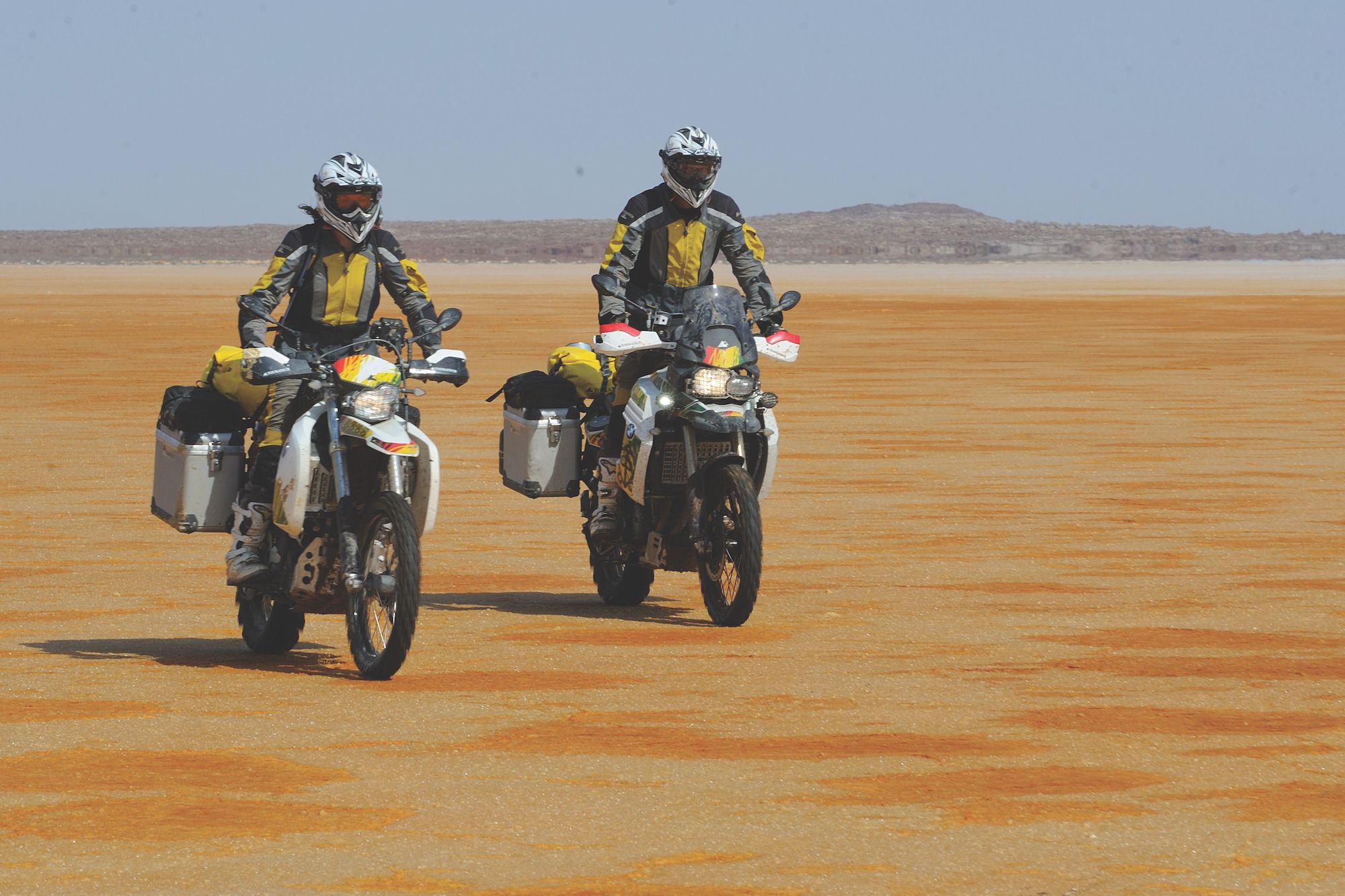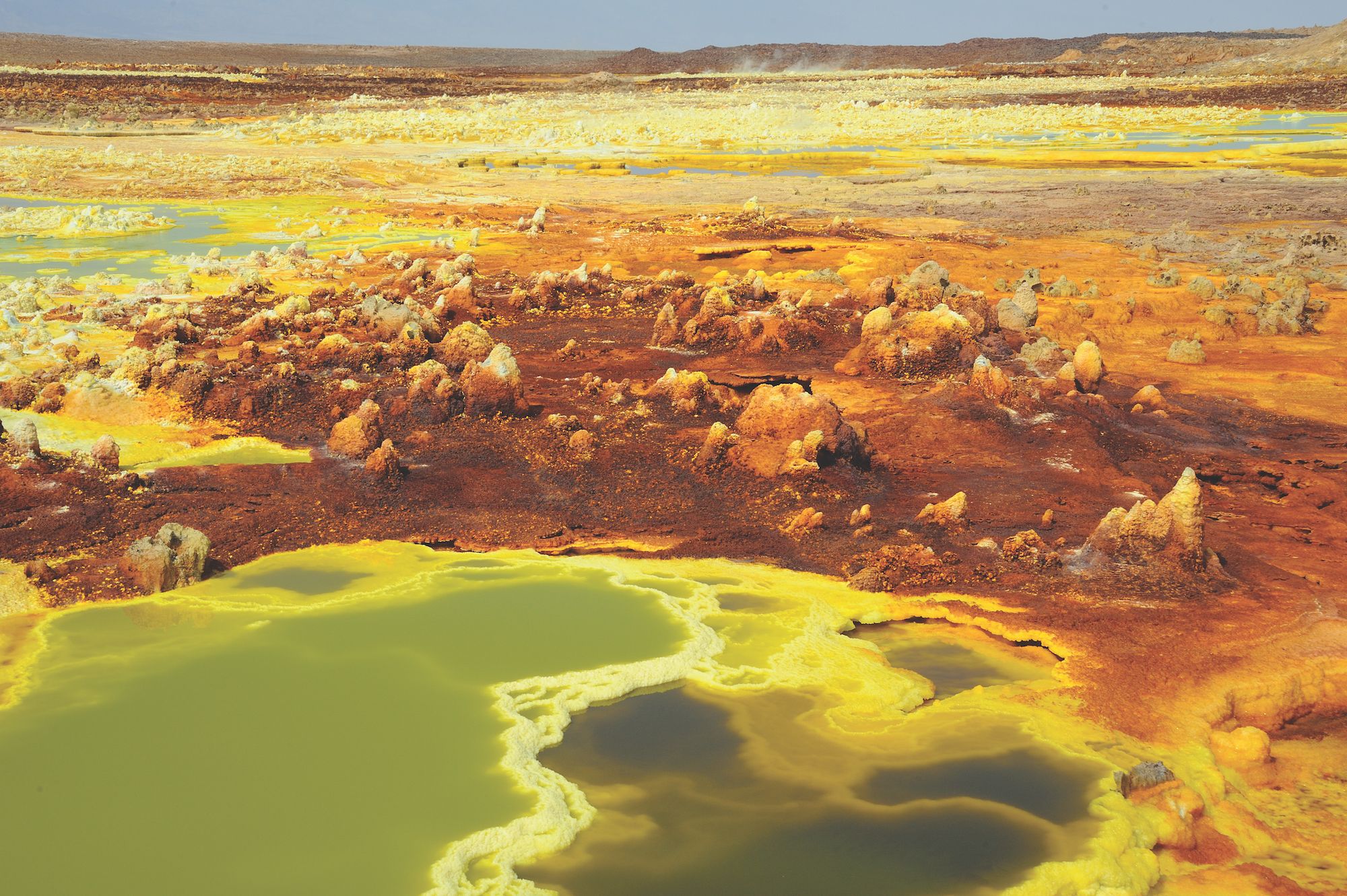Ethiopia: One More Cup of Coffee before the Desert

After an extreme experience in 2001, I was forever done with Ethiopia. Nonetheless, ten years later, I went back with my husband, Herbert, in search of the best coffee in the world. Much to my surprise, I saw the country from an exciting new angle. My old picture of Ethiopia and all the clichés were outdated, and they wouldn’t fit together with the optimistic mood of the people and their positive anticipation of the future. Accompanied by a professional film crew, an interpreter, and (on occasion) armed soldiers, we documented our 2,700-mile adventure.
The story begins with a symbolic cup of coffee in Addis Ababa on 11/11/11. At least according to our calendar. Not only do the Ethiopians have a completely different concept of time, but they also follow a nontraditional calendar. On landing here, we are in the year 2004 and suddenly seven years younger. The Café Tomoca is the capital’s top address for “buna.” In this legendary 1950s Italian-style coffee bar, we are sipping several rounds of “Welcome to Ethiopia macchiatos.” Inhaling up to 800 aromas that a coffee bean stores and then releases when it’s ground is a very sensory experience.

Life’s Too Short to Drink Bad Coffee
According to statistics, the average German consumes 150 liters of coffee per year. This means that Germans drink more coffee than beer. They are not alone, for on a bigger, global scale, the world drinks about 2 billion cups of coffee every day. Herbert and I are self-confessed caffeine junkies. We have agreed on one simple thing: Life is too short to drink bad coffee. That’s why we started buying green (raw) beans and roasting them at home in our garage some time ago. After a certain amount of experimentation with varieties and strengths, we found what we consider to be the best coffee in the world. It‘s called Yirgacheffe, which comes from a region in Ethiopia by the same name and is made from 100 percent Arabica beans. This region is exactly where we are heading now.

Life on the Road, African Style
As dawn breaks, we see Addis disappearing in our rearview mirrors. A paved road frequented by ox carts, donkeys, chickens, and auto rickshaws from Indian manufacturer Bajaj takes us south to the coffee plantations. Women in colorful dresses gracefully carry heavy loads on their heads. The traffic is typically African—chaotic but demonstrating a certain degree of consideration. Bundles of firewood, green coffee beans, and bunches of false bananas (an Ethiopian staple) are sold at the roadside.

The Motorbike as a Door Opener
With approximately 30 percent of the Ethiopian population still living in extreme poverty, the current per capita income is about $ 370 per month. But their hard lives do not diminish their great sense of pride. Paradoxically, the poorer the people, the more hospitable they are. Traveling by bike proves to be a real door opener. In our case, it’s the farmer’s door at the Konga Kabele plantation. He is one of an estimated 125 million people worldwide who earn their living growing coffee. He invites us into his simple shack for a buna ceremony. Sparse light shines through the window into the dark room. Neighbors and curious onlookers have gathered to welcome the Ferenjis (friendly term for foreigners). They find it hard to believe that we have traveled so far to see, firsthand, how they live. Drinking coffee is a social event here that lasts at least an hour. Traditionally, the jobs are clearly distributed between men and women. He grows the coffee, whereas she will do everything that’s necessary for preparation. The hostess roasts the green beans in an iron pan and passes the steaming contents around the circle of guests. She then scatters incense on the glowing coals, grinds the beans using a pestle and mortar, and brews the powder in a rounded clay pitcher called a jabana. This is the best coffee we have ever had! We drink several rounds and toast our friendship.

Life is a Constant Change
By now, my picture of Ethiopia has radically changed. It may sound strange, but this new reality is something I have to come to terms with. Ten years ago, there were runny-nosed children dressed in rags whose stomachs were distended by hunger. Extreme poverty was rampant as well as the constant shadow of corruption and the long-standing border conflict with Eritrea. The ever-present beggars bothered me. Traveling outside of Europe for the first time in my life, Africa came as something of a culture shock. Communication is the key I had forgotten to take. This time around, Tegi (our Amharic interpreter) gives us the big advantage of not being confined to superficial conversations. But also, after having spent many miles and years on the road, I have changed as a person. I now see Ethiopia as a country that is entering a fresh era and looking to the future with optimism. People are smiling again. Buildings in the towns and cities are sprouting out of the ground like mushrooms. Road development is booming. Thanks to tourism, English is spoken in many places. The children used to call out “You, you, you,” but now it’s “Where are you go?” I’m glad I’ve given Ethiopia and myself a second chance.
